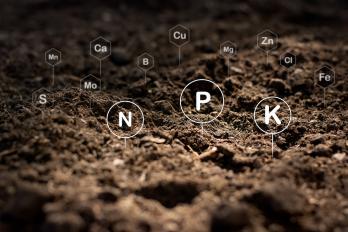LEAVING YIELDS ON THE TABLE WITH INADEQUATE STP LEVELS
Feb 10, 2020

Federated Agronomists say it over and over again: Start with a soil test. In the case of STPs – soil phosphorous levels – what the soil test reveals is vital to yields.
“Starting with a soil test, from there we interpret the results,” said Kevin Carlson, Federated’s agronomy sales manager. “Once the pH is in balance, where it needs to be, we can look at the soil phosphorous level (STP) and determine how to manage it.”
The critical value for phosphorous in soil is 20-25 parts per million (PPM). “That soil test value will predict 90-95% of probable yield,” said Carlson, for both corn and soybeans. With a soil test value for phosphorous on any given field in that range, phosphorous will not be a limiting factor for yield (though other factors still need to be considered). “You will be in the 90-95% yield potential,” said Carlson.
Alternatively, soil test values that land at 10 PPM or less for phosphorous demonstrate a severe lack of this important nutrient. “You leave a lot of yield on the table . . . with a low soil test phosphorous level – something like 40+ bu/ac. on corn, or 15+ bu./ac. on soybeans,” said Carlson. In today’s commodity market, that’s lost profit.
The bottom line: “You can’t afford to ignore it,” said Carlson. The STP levels predict yield potential, and if STPs are down, yields will also be lower. “This is where more investment needs to take place on STP.”
The end game is to get the STP critical levels to 20-25 PPM. If levels are too low, it will take more than a year or two to raise phosphorous to a critical high-test value. (The number of years to improve phosphorous levels is dependent upon soil type; sands improve more quickly than medium to heavier soils.)
Generally speaking, “we are seeing STP levels dropping in fields [across Federated’s service areas],” said Carlson, for a variety of reasons. But there is a cost-effective solution: apply more phosphorous – starting with a soil test to determine what rates are needed. (Liquid starter fertilizers are a good option; see this article,)
Carlson recommends this fact-filled article for more information on STP levels. And as always, talk to your Federated Agronomist.